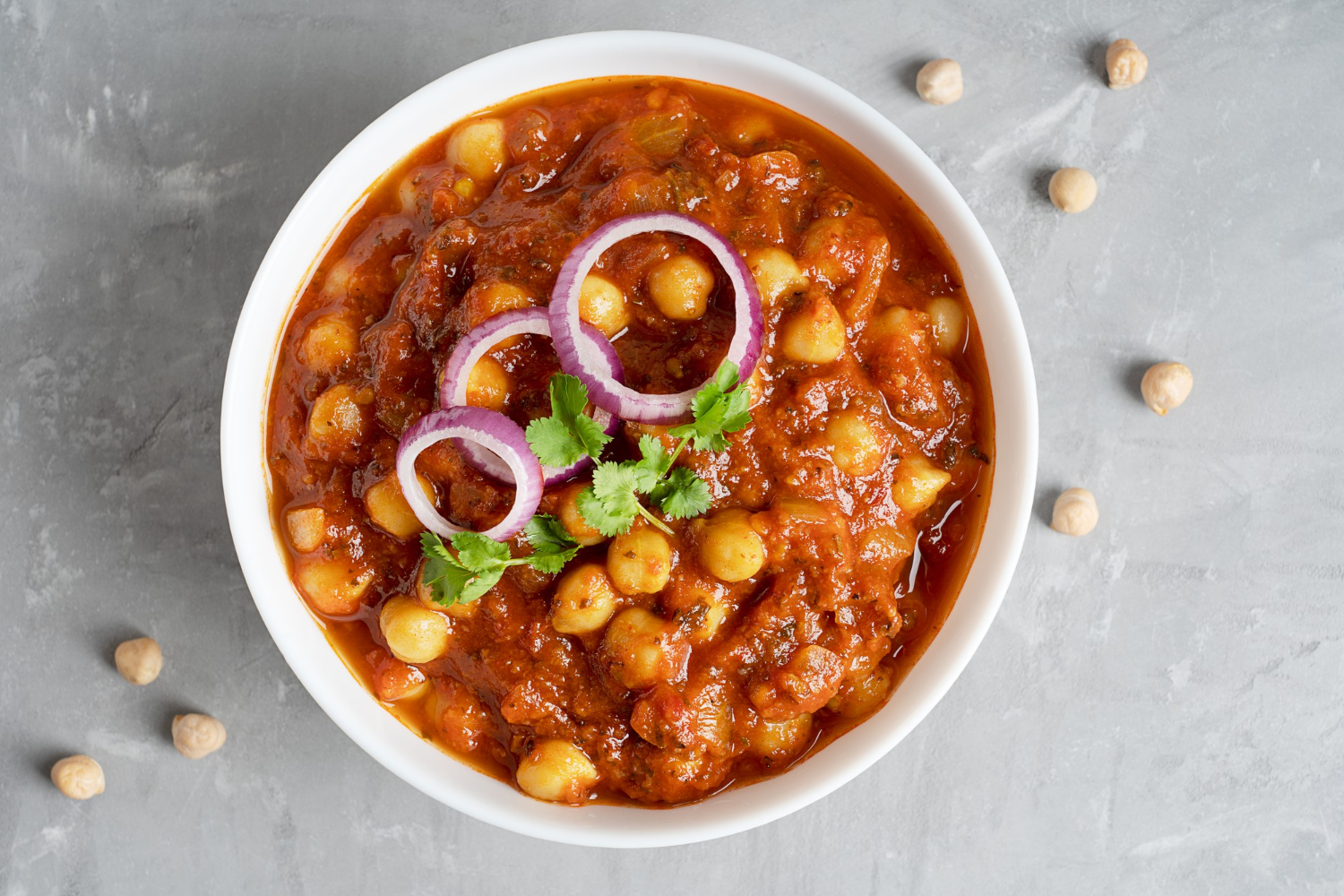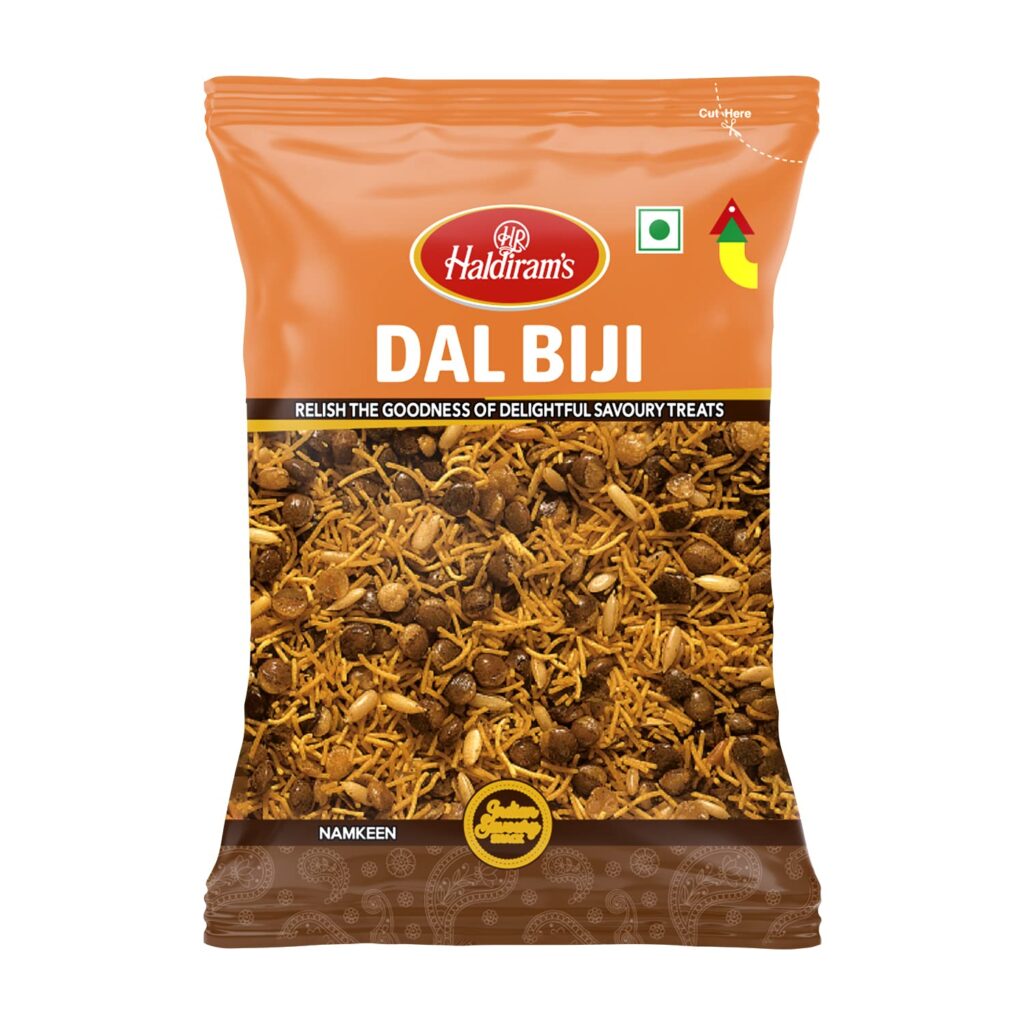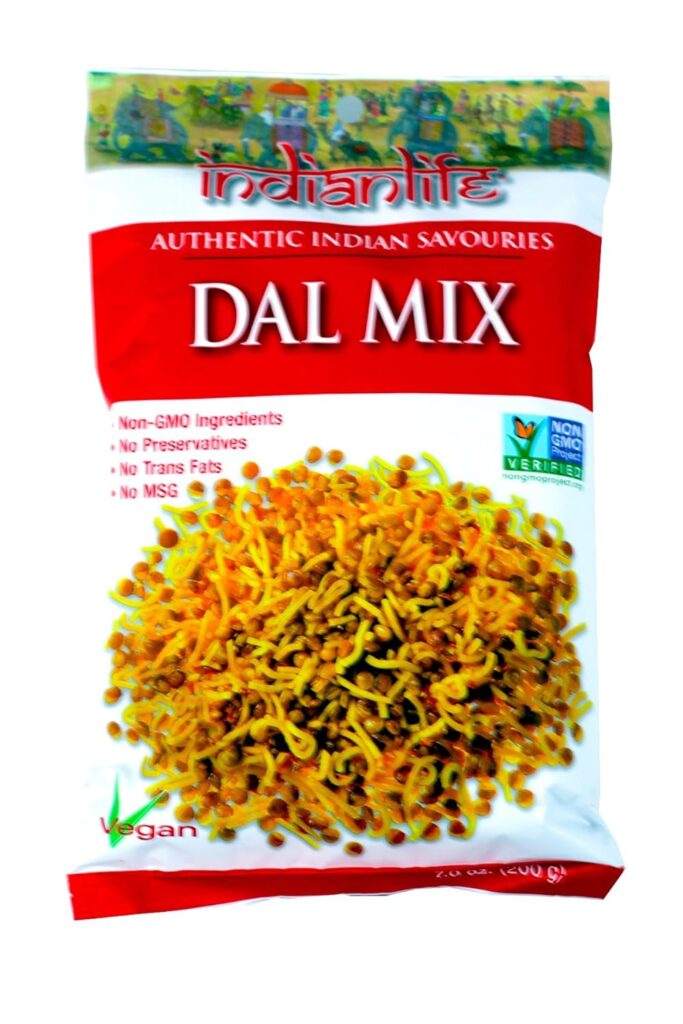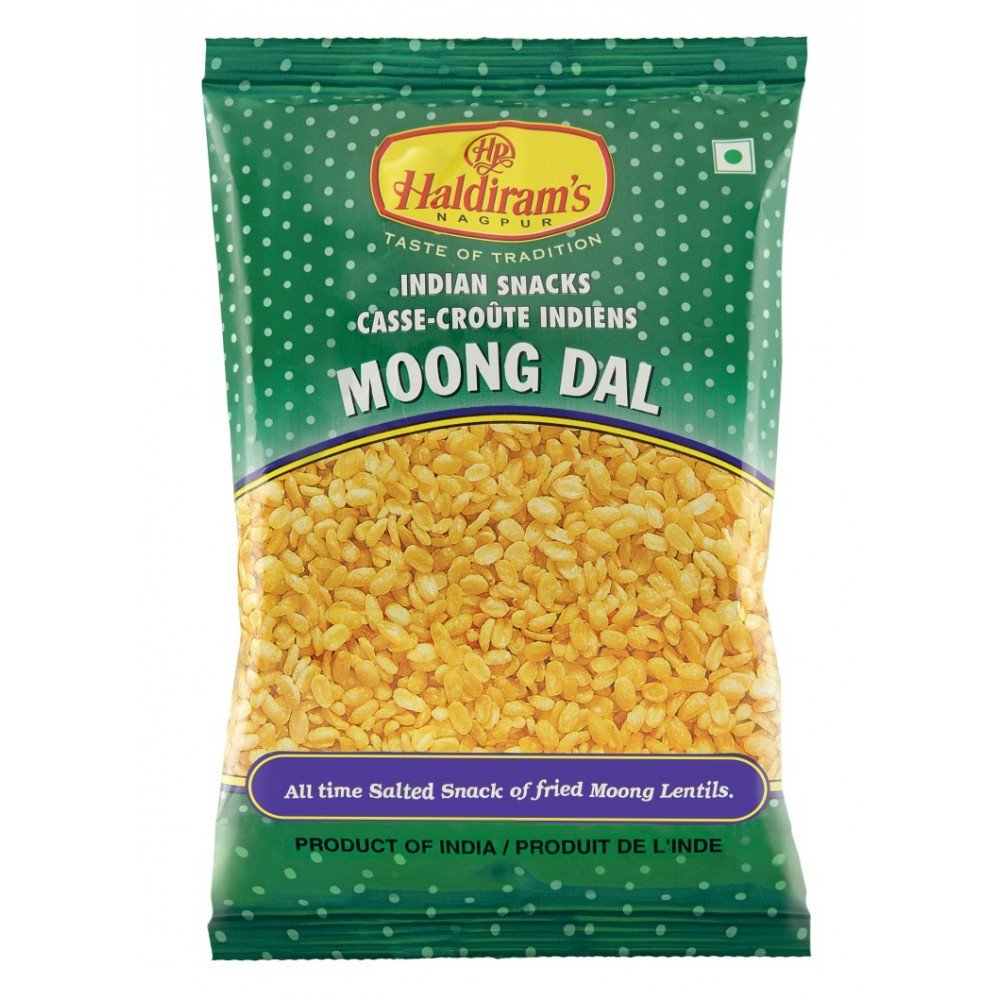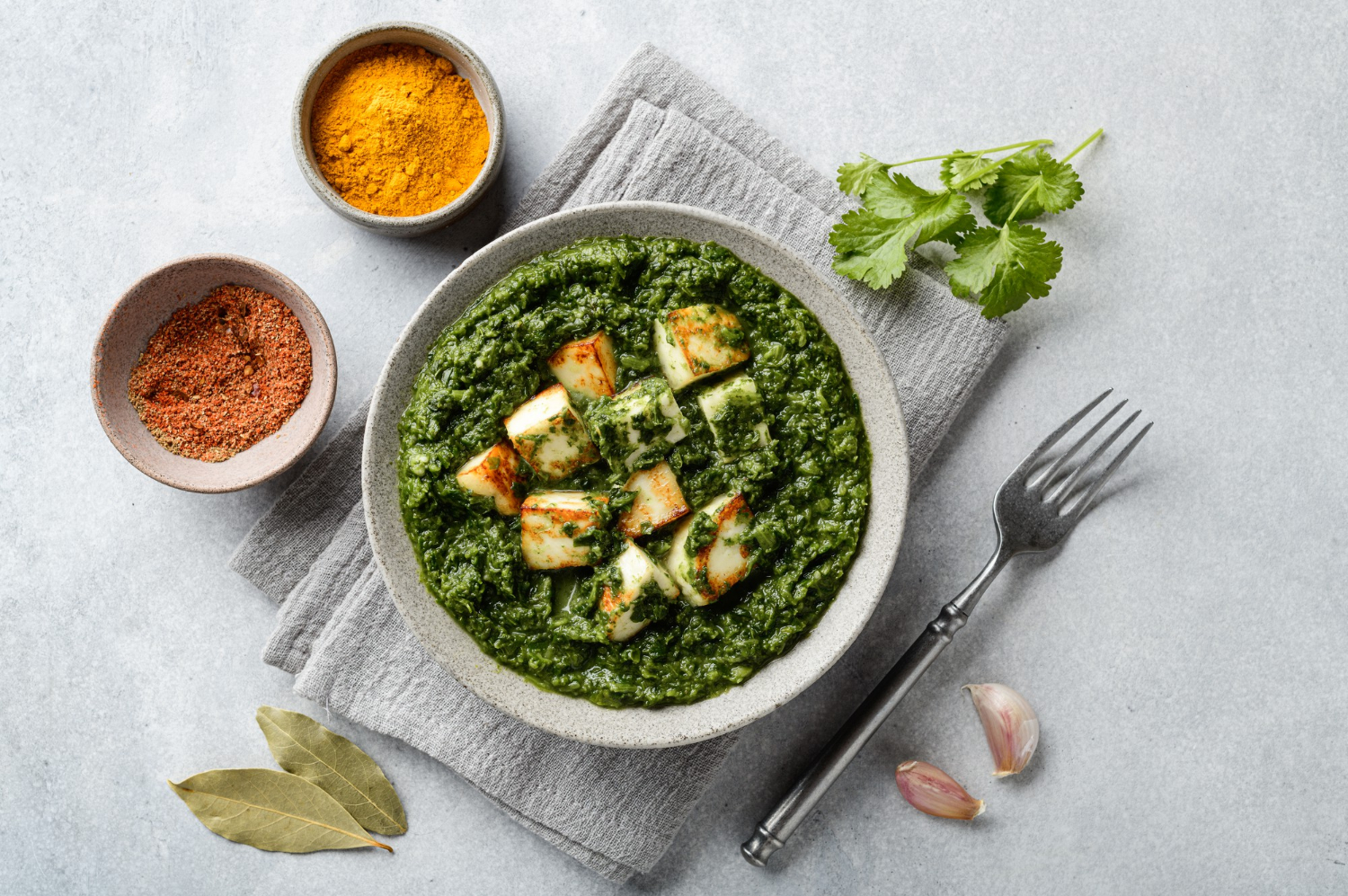5 Healthy Ways to Add Protein to Your Indian Vegetarian Meals
Protein is an essential macro-nutrient that plays a crucial role in maintaining overall health and well-being. Here are several reasons why protein is necessary in your diet:
Muscle Growth and Repair: Protein is the building block of muscles, tissues, and cells in the body. Adequate protein intake is essential for supporting muscle growth, repair, and maintenance, especially for individuals who are physically active or engage in strength training exercises.
Weight loss: Protein has a high satiety value, meaning it helps you feel full and satisfied after meals, which can aid in controlling appetite and reducing overall calorie intake. Including protein-rich foods in your diet can support weight loss and weight management efforts by promoting feelings of fullness and preventing overeating.
Bone Health: Protein is involved in the formation and maintenance of bone health. It helps in the synthesis of collagen, a protein that provides structure to bones, joints, and connective tissues. Consuming sufficient protein is important for maintaining bone density and reducing the risk of osteoporosis and fractures, especially as you age.
Hormone Regulation: Many hormones and enzymes in the body are made up of proteins. Protein plays a vital role in hormone regulation, including insulin, which controls blood sugar levels, and glucagon, which helps regulate glucose production. Consuming enough protein ensures proper hormone balance and metabolic function.
Immune Function: Proteins are essential for the proper functioning of the immune system. Antibodies, which help the body fight off infections and illnesses, are made up of proteins. Adequate protein intake supports immune function and helps the body defend against pathogens and foreign invaders.
Enzyme Activity: Enzymes are proteins that catalyze biochemical reactions in the body, facilitating processes such as digestion, metabolism, and cellular repair. Consuming sufficient protein ensures the availability of enzymes needed for various physiological functions, optimizing overall health and vitality.
Wound Healing: Protein is critical for wound healing and tissue repair processes. It provides the necessary amino acids and building blocks for synthesizing new tissues and repairing damaged cells. Adequate protein intake can accelerate recovery from injuries, surgeries, and other traumas.
In summary, protein is essential for numerous physiological functions in the body, including muscle growth, weight management, bone health, hormone regulation, immune function, enzyme activity, and wound healing. Including protein-rich foods in your diet is crucial for maintaining overall health, supporting physical performance, and promoting optimal well-being throughout life.
However, many dietician and nutritionists argue that getting your daily recommended protein intake is tough if you are a vegan or a vegetarian.
But let me get you in on a secret.
Incorporating protein into vegetarian Indian meals doesn’t have to be complicated. With the rich tapestry of flavors and ingredients that Indian cuisine offers, adding protein can be both delicious and nutritious. Whether you’re a seasoned vegetarian or simply looking to include more plant-based proteins in your diet, these five easy methods will elevate your meals to new heights of flavor and health.
Lentils and Pulses
With the rich variety of lentils and pulses available, incorporating proteins in your diet becomes not only achievable but also delicious. From traditional dals to contemporary twists, lentils and pulses offer an array of options to elevate the protein content of your meals. In this article, we’ll explore five effortless ways to integrate these nutritious ingredients into your everyday cooking, ensuring both taste and health are never compromised.
Dive into Dal Delights:
Dals, or lentil soups, are an integral part of Indian cuisine, celebrated for their rich flavors and high protein content. To make a basic dal, simply boil lentils (such as masoor dal or moong dal) with water and spices like turmeric, cumin, and coriander.
Dal Amti: Maharashtrian-style Dal
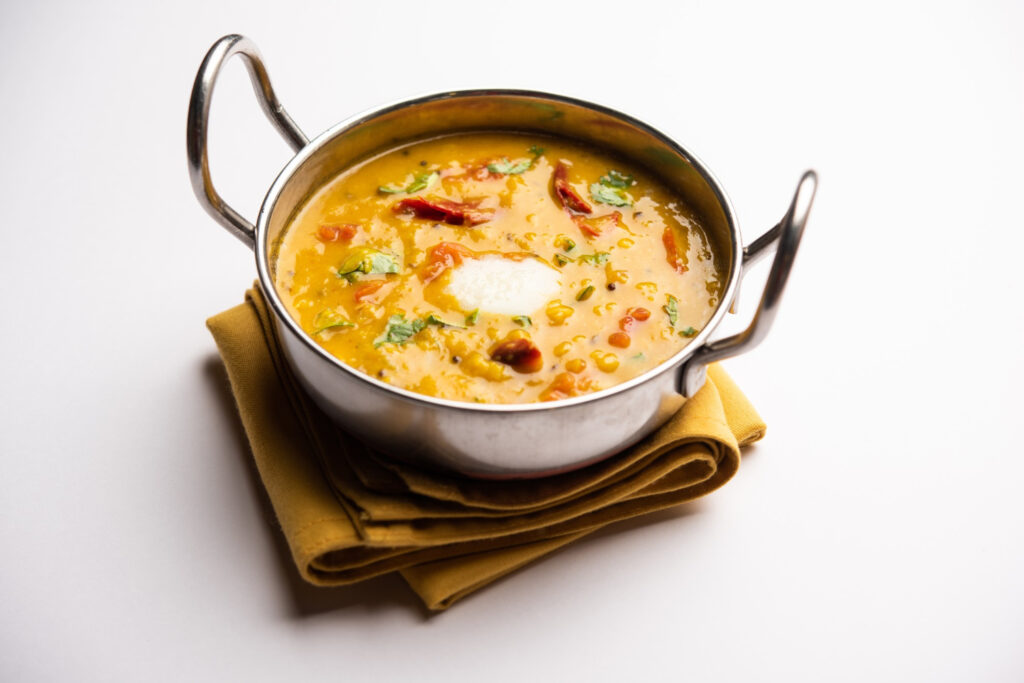
For added nutrition, consider tossing in some spinach or tomatoes. Enjoy it with rice or chapati for a wholesome meal that satisfies both your taste buds and your body’s protein needs.
Craft Flavorful Pulao and Pilafs:
Upgrade your usual rice dishes by incorporating lentils or pulses into them. Prepare a vibrant lentil pilaf by cooking rice with a generous helping of protein-rich lentils like chana dal or toor dal. This is called Khichadi or Khichuri.
Authentic Indian Khichadi Recipe
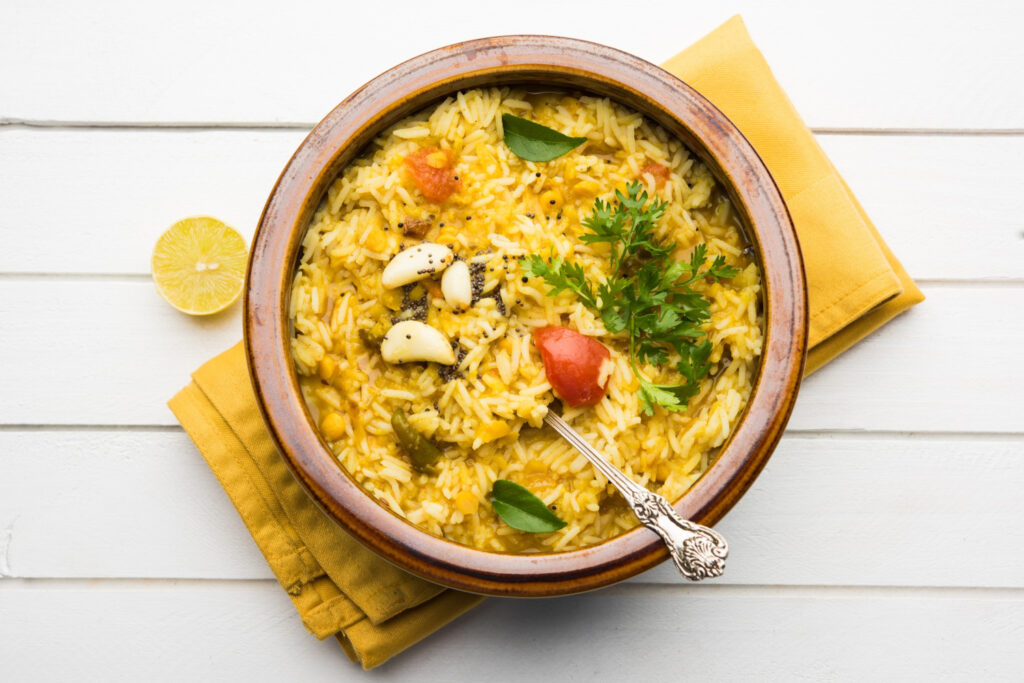
Enhance the flavor profile with aromatic spices such as cloves, cinnamon, and cardamom.
The result?
A fragrant and filling dish that packs a powerful protein punch.
Spice Up Your Curries:
Curries offer endless possibilities for creativity in the kitchen, and lentils and pulses can be the star ingredients. Whether it’s a classic chana masala made with hearty chickpeas or a comforting Rajma curry featuring red kidney beans, these dishes are sure to satisfy your craving for both flavor and protein.
Chana Masala-Simplicity at its best
Experiment with different combinations of spices and vegetables to create your signature curry that’s bursting with protein goodness.
Add it to your breakfast:
Yes, you heard it right! You don’t need to be a non-vegetarian, meat-eater, or even an eggetarian to incorporate protein into your breakfast. It’s as simple as integrating lentils and legumes into your daily morning routine. Consider adding urad dal or chana dal to your upma for an extra boost of protein and texture. Alternatively, enrich your poha by incorporating black chana curry.
These small changes not only enhance the nutritional value of your breakfast but also infuse it with the delicious flavors and wholesome goodness of Indian cuisine. Start your day right by fueling your body with protein-rich vegetarian options that keep you energized and satisfied until your next meal!
Rava Upma: A Healthy Way Start To Your Day
Tarri Pohe: A Flavorful Twist on a Classic Breakfast
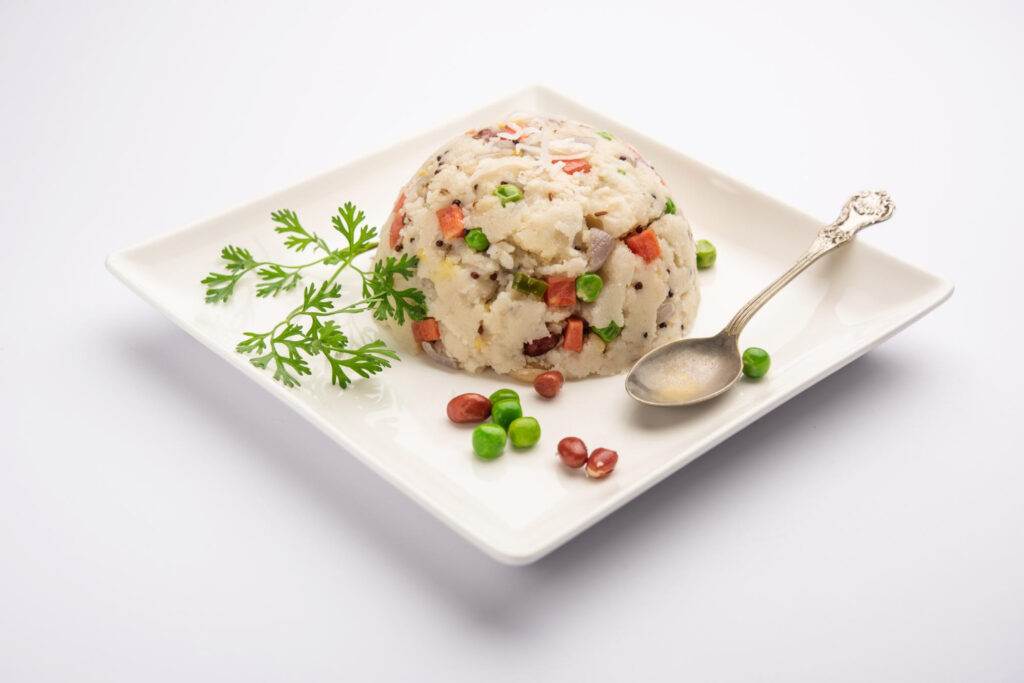

Indulge in Savory Snacks:
Who said snacks couldn’t be nutritious? Lentils and pulses can be transformed into delectable bites that are perfect for munching anytime.
Whip up some crispy lentil fritters (dal vada) or spicy chickpea chaat for a protein-packed snack that’s as satisfying as it is wholesome. These snacks not only provide a quick energy boost but also keep you feeling full and satisfied for longer.
Embrace the Versatility of Lentil Pastas:
For a modern twist on traditional Indian cuisine, consider incorporating lentil-based pasta into your meals. Lentil pastas are gluten-free, high in protein, and incredibly versatile, making them an ideal choice for vegetarian Indian dishes. Use them as a base for your favorite curries or toss them with vegetables and spices for a quick and nutritious meal. With lentil pastas, the possibilities are endless.

Incorporating lentils and pulses into your vegetarian Indian meals is not only easy but also incredibly rewarding. With their high protein content, rich flavor profile, and versatility, lentils and pulses offer endless opportunities to create delicious and nutritious dishes that will leave you feeling satisfied and energized. So, why wait? Start experimenting with these protein-packed ingredients today and elevate your vegetarian Indian cooking to new heights of flavor and health.
Paneer
Another versatile ingredient that stands out is paneer, a fresh cheese commonly used in Indian cuisine. Paneer not only provides a rich source of protein but also adds a creamy texture to dishes, making it a favorite among vegetarians. Here are some creative ways to include paneer in your meals:
Paneer Tikka:
Paneer tikka is a popular appetizer or main course dish where paneer cubes are marinated in a flavorful mixture of yogurt and spices, then skewered and grilled. The result is a dish bursting with smoky flavors and tender paneer. You can pair paneer tikka with mint chutney and fresh lemon wedges for a refreshing twist.
Paneer Tikka Recipe: A Delicious Vegetarian Appetizer
Palak Paneer:
Palak paneer is a classic North Indian dish where paneer cubes are simmered in a creamy spinach gravy. Spinach is not only packed with nutrients but also adds vibrant color to the dish. The combination of tender paneer and creamy spinach makes palak paneer a comforting and wholesome meal when served with naan or rice.
Palak Paneer- A creamy combination of Spinach and Paneer
Paneer Salad:
For a light and refreshing option, crumble paneer over your favorite salad greens. Paneer adds a satisfying texture and a boost of protein to salads. You can toss paneer with colorful vegetables, nuts, seeds, and a tangy dressing for a nutritious and filling meal.
Delightful Mediterranean Paneer Salad: A Fusion of Flavors
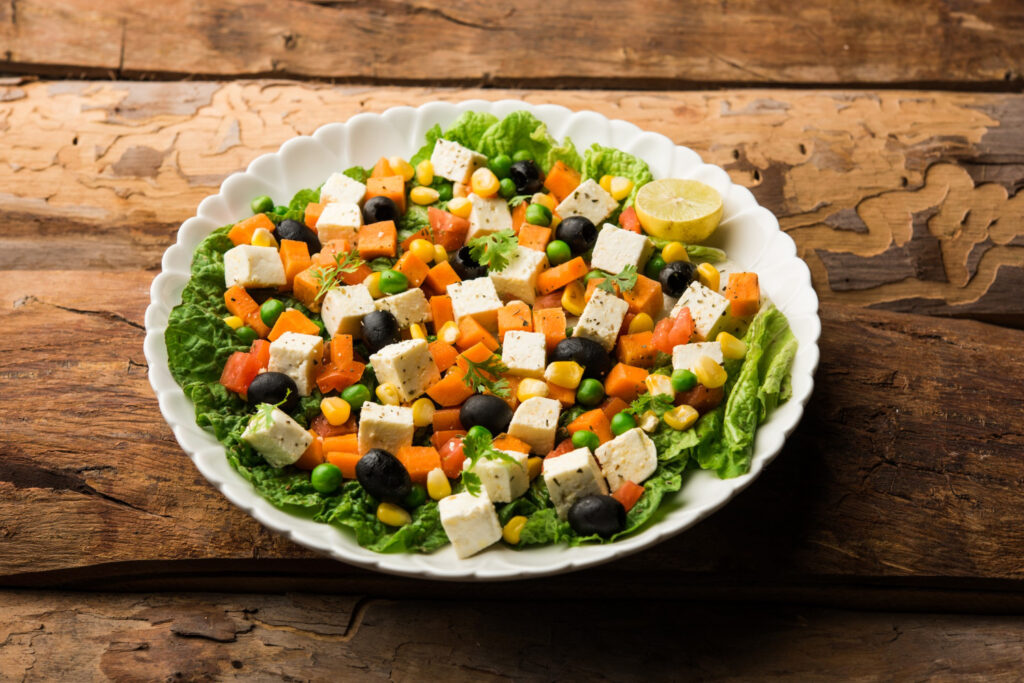
Paneer Wraps:
Make quick and easy paneer wraps by stuffing warm rotis or tortillas with paneer cubes, fresh vegetables, and a drizzle of your favorite sauce. This makes for a convenient and portable meal option that’s perfect for lunch or a snack on the go.
Paneer Kathi Roll or Paneer Wrap
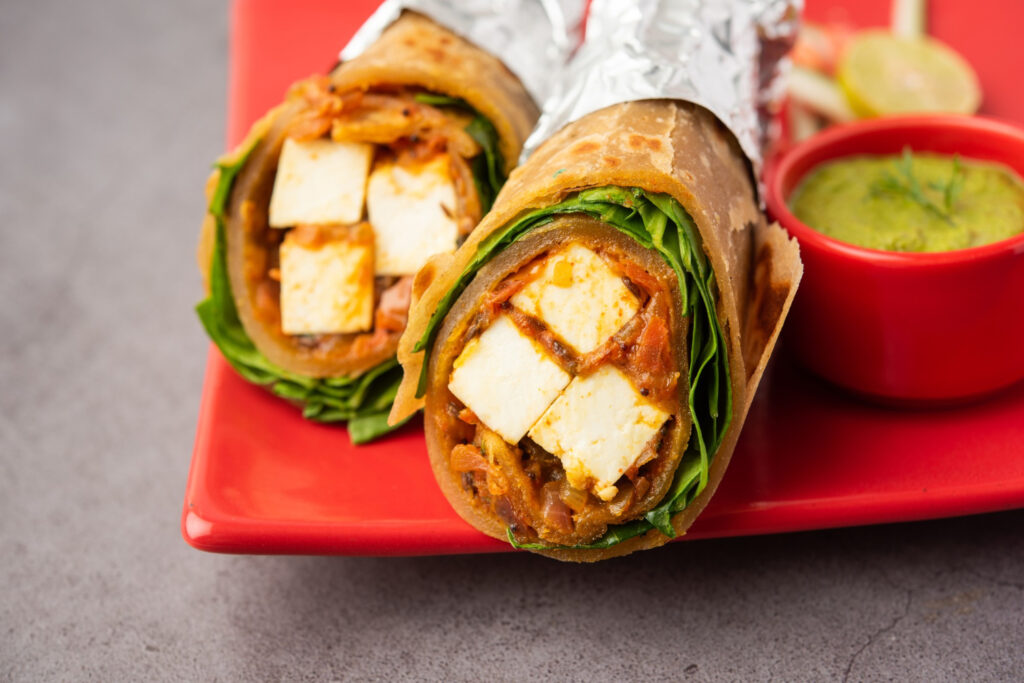
Chili Paneer
Chili Paneer is a popular Indo-Chinese dish that combines the delicate texture of paneer with the bold flavors of Chinese cuisine. Cubes of paneer are stir-fried with colorful bell peppers, onions, and a savory chili sauce, resulting in a spicy and satisfying dish that tantalizes the taste buds.
Chili Paneer: An Indo-Chinese Fusion Favorite

Whether served as an appetizer or paired with rice or noodles, Chili Paneer is a favorite among vegetarians and spice enthusiasts alike.
By incorporating paneer into your vegetarian Indian meals, you not only elevate the protein content but also add a burst of flavor and texture to your dishes. Whether grilled, simmered, crumbled, or stir-fried, paneer offers endless possibilities for creating satisfying and nutritious meals that everyone will love.
Soy Products
Soy-based products like tofu and tempeh are excellent sources of protein and can be seamlessly integrated into Indian dishes.
Replace paneer with tofu in recipes like tofu butter masala or use tempeh in place of meat in dishes like biryani or kebabs. Experiment with different marinades and spices to infuse these soy products with authentic Indian flavors.
Soy-based products like tofu and tempeh offer fantastic alternatives to traditional protein sources in Indian cuisine, particularly for those following a vegetarian or vegan diet. Rich in protein and dairy free, tofu and tempeh can be easily be consumed by lactose-intolerant people as well.

Here are some creative ways to incorporate them:
Tofu Curry:
Tofu curry is a flavorful and aromatic dish featuring cubed tofu simmered in a rich and fragrant curry sauce, typically infused with spices like turmeric, cumin, and coriander. This hearty and comforting meal often includes vegetables like potatoes, peas, and carrots, creating a harmonious blend of textures and flavors that pairs perfectly with steamed rice or naan bread for a satisfying vegetarian or vegan dinner option.

By incorporating tofu and tempeh into your Indian dishes, you not only boost their protein content but also add a new dimension of flavor and texture. Experiment with different marinades, spices, and cooking methods to create delicious and nutritious meals that cater to your taste preferences and dietary needs.
Nuts and Seeds
Nuts and seeds are not only rich in protein but also provide essential fats and micronutrients. Incorporate almonds, cashews, and peanuts into your meals by grinding them into creamy gravies or using them as toppings for salads and stir-fries. Additionally, sprinkle chia seeds or hemp seeds over yogurt or oatmeal for a nutritious boost of protein and omega-3 fatty acids.
Nuts and seeds are nutritional powerhouses that offer a wealth of protein, essential fats, and micronutrients, making them valuable additions to vegetarian Indian meals. Here’s how you can integrate almonds, cashews, peanuts, chia seeds, and hemp seeds into your dishes:
Creamy Nut Gravies:
Almonds, cashews, and peanuts can be ground into creamy pastes to thicken and enrich gravies in Indian cooking. For instance, in dishes like korma or butter masala, blend soaked nuts with tomatoes, onions, and spices to create a luscious base. The nuts not only contribute protein but also lend a rich, velvety texture and a subtle nutty flavor to the dish.
Nutty Toppings:
Toasted almonds, cashews, and peanuts can serve as delightful toppings for various Indian dishes, adding crunch, flavor, and an extra dose of protein. Sprinkle chopped nuts over salads, stir-fries, or vegetable curries just before serving to enhance both the taste and nutritional profile of the dish.
Seeds for Breakfast:
Chia seeds and hemp seeds are versatile additions to breakfast options. Sprinkle them over yogurt, oatmeal, or smoothie bowls for a nutritious boost of protein, fiber, and omega-3 fatty acids. Chia seeds also have the unique ability to absorb liquid, creating a pudding-like texture when mixed with milk or yogurt, making them an excellent ingredient for overnight oats or chia seed pudding.
Nutty Snacks:
Roasted nuts and seeds make for wholesome and satisfying snacks that can be enjoyed on their own or combined with dried fruits and spices for added flavor. Keep a stash of mixed nuts and seeds handy for a quick and nutritious snack option that provides sustained energy and satiety throughout the day.
Seed Sprinkles:
Experiment with seed blends by mixing chia seeds, hemp seeds, sesame seeds, pumpkin seeds, sunflower seeds and flaxseeds to create a nutrient-rich topping for salads, soups, or roasted vegetables. These seed blends not only add a crunchy texture but also deliver a diverse range of vitamins, minerals, and antioxidants to your meals.
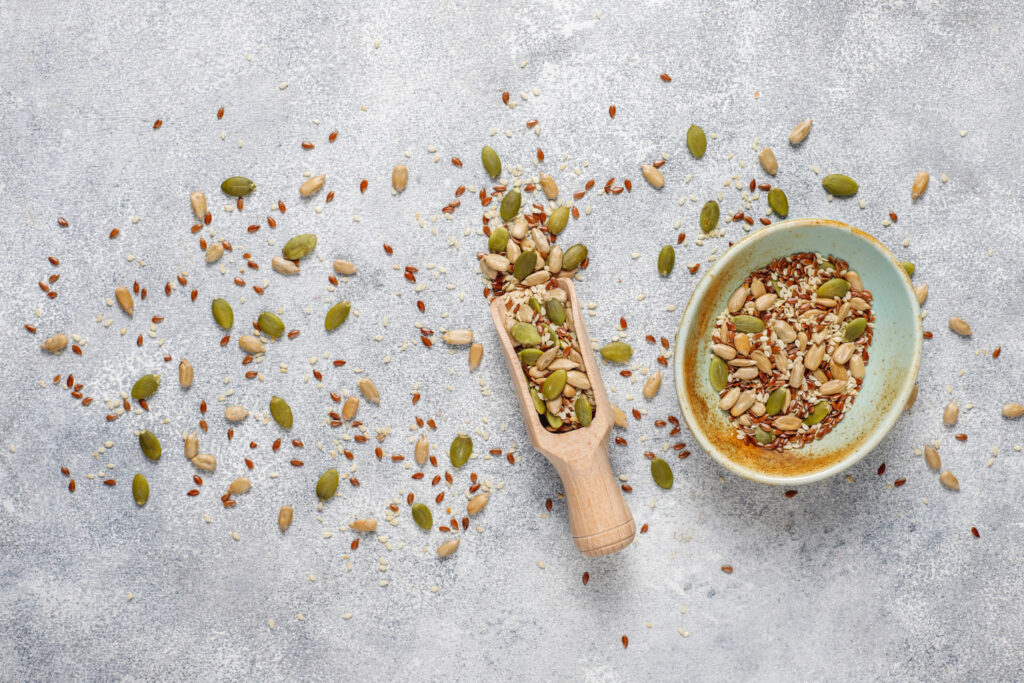
By incorporating nuts and seeds into your vegetarian Indian meals, you not only enhance their flavor and texture but also elevate their nutritional value. Whether blended into creamy gravies, sprinkled over dishes as toppings, or used as a crunchy snack, nuts and seeds offer endless possibilities for creating delicious and wholesome meals that nourish both body and soul.
Quinoa and Millets
Quinoa and millets such as foxtail millet (kangni) and pearl millet (bajra) are ancient grains that have been rediscovered in recent years due to their exceptional nutritional benefits. These grains offer a wealth of protein, fiber, vitamins, and minerals, making them valuable additions to vegetarian Indian meals. Here’s how you can incorporate quinoa and millets into your diet:
Protein-Rich Pulao:
Cook quinoa or millets with an array of aromatic spices, vegetables, and herbs to create a flavorful and nutritious pulao. Start by toasting the grains in a little oil or ghee to enhance their nutty flavor, then add water or vegetable broth and simmer until tender. Stir in your favorite vegetables like carrots, peas, bell peppers, and cauliflower, along with spices like cumin, coriander, turmeric, and garam masala. The result is a protein-packed one-pot meal that’s both satisfying and wholesome.
Salads and Buddha Bowls:
Use cooked quinoa or millets as a base for vibrant salads and Buddha bowls. Toss the grains with a variety of fresh vegetables, leafy greens, nuts, seeds, and a tangy dressing for a nutritious and filling meal. You can also add protein-rich ingredients like chickpeas, tofu, or paneer to boost the protein content and make the dish more satisfying. Customize your salads and Buddha bowls with your favorite ingredients to create endless flavor combinations.
Gluten-Free Alternative for proteins:
Quinoa and millets are naturally gluten-free, making them ideal choices for individuals with celiac disease or gluten sensitivity. Use quinoa or millets in place of wheat or barley in traditional Indian dishes like upma, pongal, or kheer to make them suitable for gluten-free diets. These grains provide a nutritious and flavorful alternative while ensuring that everyone can enjoy the meal without compromising on taste or health benefits.
Baked Goods:
Incorporate quinoa flour or millet flour into baked goods like bread, muffins, and cookies to increase their protein and nutrient content. Quinoa flour and millet flour add a delicate nutty flavor and a moist texture to baked goods, making them a healthier alternative to refined flours. Experiment with different recipes and ratios to find the perfect balance of taste and texture for your favorite baked treats.
Porridge and Breakfast Bowls:
Cook quinoa or millets with milk or plant-based milk and spices to make a creamy and nutritious breakfast porridge. Top the porridge with fresh fruit, nuts, seeds, and a drizzle of honey or maple syrup for added sweetness and flavor. You can also prepare breakfast bowls with cooked quinoa or millets, yogurt, and a variety of toppings like granola, berries, and coconut flakes for a hearty and satisfying start to the day.
By incorporating quinoa and millets into your vegetarian Indian meals, you not only boost their protein content but also add a variety of essential nutrients and flavors. Whether enjoyed in savory dishes like pulao and salads or sweet treats like porridge and baked goods, quinoa and millets offer endless possibilities for creating delicious and nutritious meals that nourish both body and soul.
By following these tips, you can easily enhance the protein content of your vegetarian Indian meals while enjoying the rich flavors and aromas of traditional Indian cuisine. Incorporate these ingredients into your recipes and watch as your meals become more satisfying, nutritious, and delicious.
Happy cooking!


